Are you considering installing a home lift in your property—a life-changing upgrade that could transform your daily living? Imagine having greater freedom, enhanced safety, and true independence, especially for elderly family members or those with mobility challenges.
However, the installation process may not be as straightforward as you imagine. From permits to power supply to the final handover, small oversights can snowball into delays and extra costs, which could ultimately delay your dream of creating an accessible home.
To prevent this from happening, we’ve created this guide. It breaks down the 25 most common home elevator installation pitfalls—and, more importantly, provides solutions for how to avoid them. Whether you’re just starting to explore your options or are already planning an installation, these expert recommendations will help you plan ahead for a smoother, stress-free experience.
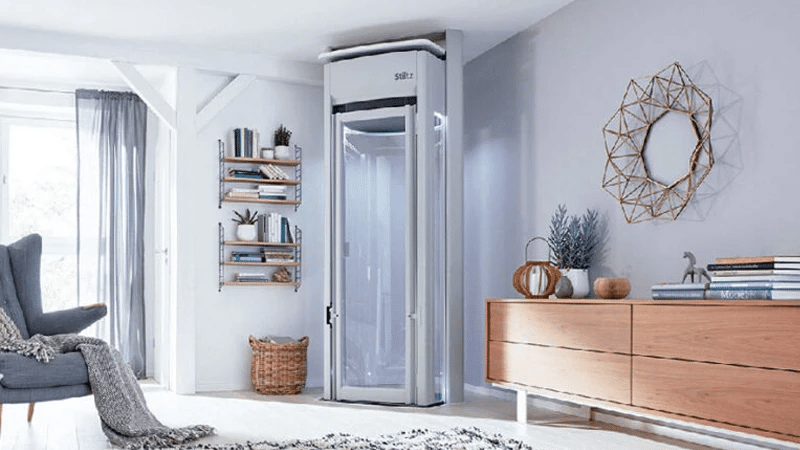
Quick Navigation
Section 1: Planning, Permits & Initial Preparation
1. Underestimating Permit Requirements
In Kenya, interior works that alter structure or building services usually require County Government approval. If you need openings between floors or any structural changes, apply before you start; otherwise you risk a stop-order and penalties. For Nairobi (and other counties) these are handled via the county construction/building permit process.
Suggestion: Ask your installer to handle (or help with) county approvals and advise whether any DOSHS steps apply to your property type.
2. Choosing the Wrong Lift Type
Not all home lifts are alike. Match the model to your space, load needs, space requirements, and your future plans. In Kenya’s multi-generational households, you might need to plan for extended family members or caregivers.
For example, a model with a smaller footprint is ideal for a tight Kenyan maisonette (often found in Nairobi),
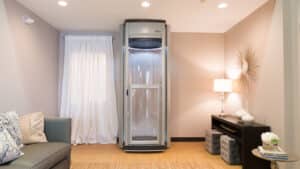
while a wheelchair-friendly model (such as the ‘Trio’ size) is better suited to a multi-generational home or if you plan to expand your family in the future. Remember to arrange a professional survey to confirm the dimensions and travel path that best suit your needs.
3. Ignoring Structural Limitations
Older properties or those with unique architectural features may have structural stability concerns. This is particularly important in Kenya, where building standards have evolved over decades. Properties built before modern seismic codes may require reinforcement.
Have a qualified structural engineer review your property early in the planning phase such as openings and loads before your commit to a location. This is especially crucial for:
- Buildings over 20 years old
- Properties in areas prone to ground movement
- Houses with unique architectural features or non-standard construction
4. Overlooking Electrical Requirements
Home elevators require stable, adequate power supply for safe operation. Different models have varying voltage and current requirements—some need single-phase power, others require three-phase power.
In Kenya, where power fluctuations can be common, consider:
- Installing voltage stabilizers
- Backup power solutions (generator or UPS systems)
- Dedicated electrical circuits with proper earthing
- Compliance with Kenya Bureau of Standards (KEBS) electrical codes
Have a certified electrical contractor assess your power supply and upgrade if necessary before installation begins.
5. Focusing Only on the Elevator, Ignoring Access Routes
Installing a home elevator isn’t just about vertical movement—ensure the surrounding access areas are equally convenient and safe. Consider doorway widths, corridor space, floor level transitions, and slip-resistant flooring.
This is particularly important for wheelchair users or those using walking aids, ensuring the entire route from room to elevator to destination floor is barrier-free.
Section 2: Construction & Contractor Coordination
6. Underestimating Construction Disruption
Installing a home lift is not a quiet project. The construction process often involves dust, noise, and temporary inaccessibility to certain areas so it could be noisy and messy.
For example, the floor or walls near the installation site may need to be cut, which can disrupt daily routines and cause a degree of inconvenience. Therefore, it is recommended to communicate with your family before construction begins to plan temporary access routes. If necessary, use dust covers to seal off the construction area and protect furniture and floors in advance to minimize dust and damage.
You should also estimate the time required for construction, as the duration of the project may affect your family’s daily routines and activities. These factors should all be taken into consideration.
Installation Timeline Vary Factors:
- Elevator type and location: Pitless designs (like Stiltz) typically take 1-2 days, while structural modifications may add weeks
- Building age and condition: Older properties or those requiring reinforcement take longer
- Contractor team size: Well-staffed teams can work more efficiently
- Custom requirements: Bespoke finishes or renovations extend timelines
7. Poor Communication with Contractors
Communication breakdowns lead to budget overruns, delays, and results that don’t match expectations. In Kenya’s diverse linguistic landscape, ensure all parties understand project requirements clearly.
Communication Best Practices:
- Document all agreements in writing (English and Swahili if necessary)
- Request detailed project timelines with milestones
- Clarify scope of work (demolition, installation, finishing, cleanup)
- Schedule regular progress meetings
- Establish clear payment schedules tied to milestones
Get all agreements in writing and request a detailed project timeline. Confirm the scope: does it include painting, cleanup, furniture moving? Schedule regular progress reviews.
8. Underbudgeting
The total cost of a home lift may not just be the lift itself. It can also include installation fees, custom designs, necessary home structural modifications, permit fees, and finishing decorations. Sometimes, people overlook these additional costs, which can lead to a lack of funds mid-project and force delays or a reduction in the scope of work.
» Budget Planning Tips:
- Add 15-20% contingency to quoted prices
- Ask contractors about potential additional costs upfront
- Factor in currency fluctuations for imported equipment
- Consider financing options through local banks
- Confirm whether quotes include VAT and import duties
9. Forgetting Future Maintenance
Lifts require yearly maintenance to stay safe and functional. Ignoring it can cause costly breakdowns or emergencies.
» Maintenance Planning Tips:
- Before purchasing, understand the brand’s maintenance services and costs (e.g., whether they include annual inspections, parts replacement, and emergency support).
- Clarify the maintenance schedule and service duration, and add them to your calendar to avoid forgetting later.
- Prioritize brands with local maintenance teams to reduce wait times in case of breakdowns.
- If the brand offers extended warranty + maintenance packages, consider purchasing them upfront to lower long-term maintenance costs.
- Have a certified electrical contractor assess your power supply and upgrade if necessary before installation begins.
Monthly Self-Inspection Checklist (for Homeowners):
If you notice any abnormalities, contact a technician immediately. Do not attempt to repair it yourself, as this may compromise your safety.
10. No Clear Warranty Terms
A warranty should cover not only the product itself but also the quality of the installation work. Without clear warranty coverage, manufacturers and contractors may shift blame when issues arise—resulting in delays and frustration.
» Tips for Checking Warranty Terms:
- Request a written warranty document that clearly outlines coverage for parts, labor, manufacturing quality, and installation work.
- Confirm the warranty duration and what is excluded (e.g., damage caused by user error or natural disasters).
- Ask about the warranty claim process and expected repair timelines.
- If both the manufacturer and contractor offer warranties, make sure their responsibilities are clearly divided to avoid blame-shifting later.
Section 3: Lifestyle, Insurance, and Long-Term Considerations
11. Overlooking Insurance Implications
Installing a home lift may impact your homeowner’s insurance premiums or policy terms, especially if it involves safety equipment, increases property value, or alters the structure of your home. It’s important to inform your insurance provider before installation and confirm whether your policy needs to be updated to ensure continued protection in case of accidents or equipment damage.
Tip:
-
Ask your insurance company if there are any additional coverage options for elevators, such as protection for part failures or third-party liability.
-
If the installation increases your home’s value, remember to adjust the insured amount to avoid being underinsured.
-
Keep all construction and inspection documents for future insurance claims as proof.
12. Not Planning for Future Needs
When installing a home elevator, don’t just focus on current needs—like making it easier to carry items or temporarily assisting a family member with mobility issues. Try to envision your life 5–10 years from now. As household members age, mobility may decrease, or the family might grow. Will the chosen model still suit your needs?
Think ahead about these questions:
-
Will elderly family members eventually need wheelchair access?
-
Will more people live in the house in the future—such as relatives moving in?
-
Will you need to transport large items like strollers or heavy appliances?
These are all important considerations when selecting a home lift.
13. Overlooking Financial Aid and Subsidy Options
A home lift is an investment—explore options like government grants, disability subsidies, bank loans, or special promotions from manufacturers to help finance the project.
14. Neglecting Aesthetic Design
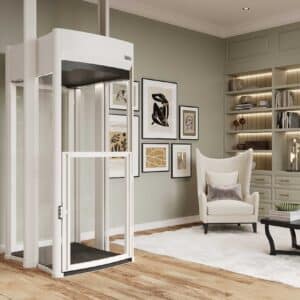
Many people still think of home lifts as bulky, unattractive, and only available in one standard design, assuming they’ll ruin the interior décor. In reality, modern home elevators have evolved significantly. They’re now more compact and can be customized to match your home’s style. Whether you prefer wood finishes, industrial metal, or minimalist glass, today’s lifts can seamlessly blend into your interior design—offering both function and beauty.
For example, Stiltz home lifts can even be installed inside a wardrobe, making them nearly invisible in your daily living space. If you want a discreet, almost invisible lift, this design can easily achieve that—preserving your home’s aesthetics while adding everyday convenience.
15. Not Learning to Use the Lift
Taking the time to understand how a home lift works—including everyday operation and emergency functions—not only boosts user confidence but also ensures that your entire household can respond calmly during unexpected situations.
For example, with a Stiltz home lift, the system is equipped with dual safety pans (top and bottom) and an obstacle detection system. If there is an object or person beneath the lift, the system will immediately detect it and stop the lift automatically to prevent accidents.
Therefore, it’s crucial to understand the safety features provided by different brands. This way, when something happens, you’ll know how the lift will respond and how to act appropriately—no panic, just peace of mind and proper safety.
16. No Future Resale Plan Considered
If you plan to sell your home in the future, make sure the lift will add value to the property—not just cater to your current personal needs.
During our global research, PVE (2024) found that properties with elevators can command 10–15% higher value, driven by the growing demand for accessible living spaces. Similarly, Cube Lifts (2025) concluded that a home lift can raise resale value by 5–10%, particularly through the added luxury and accessibility appeal it offers—especially attractive to older buyers and those prioritizing convenience. While Africa-specific data is limited, Why Africa Needs a Home Elevator by PE Lifts notes that installing home elevators “significantly increases property marketability”—a strong indicator that such installations could add value, even if the uplift is not yet quantified.
Section 4: Personnel, Space & Daily Use
17. Not Involving Family Members or Caregivers
If the lift is being installed for someone else—especially an elderly person or a family member with limited mobility—make sure they and their caregiver are involved early in the process and receive full usage training.
A home lift is a thoughtful and practical gift, but more importantly, users must clearly understand how to operate it safely and respond in emergencies. During handover, go step-by-step through the elevator’s operation, and ensure both the elderly person and caregiver can confidently perform essential tasks such as:
-
Emergency stop
-
Using the emergency call system
-
Activating the backup descent system (usually automatic, but still needs explanation)
This way, if an unexpected situation occurs, they’ll be able to handle it calmly and safely—protecting themselves and others.
18. Not Clearing the Installation Area in Advance
Before the installation team arrives, clear out the designated installation area and surrounding space. This helps speed up the process and reduces obstacles on-site.
19. Missing the Ideal Installation Timing
Avoid scheduling installation during extreme weather, holidays, or when other renovation work is ongoing. Proper timing ensures the installation is completed more efficiently and safely.
20. Failing to Inform Neighbors
If you live in a shared building or community, it’s courteous to inform your neighbors beforehand to prevent unnecessary disturbance. A simple heads-up can help reduce complaints and maintain good relationships.
21. Incomplete Handover Inspection
Before signing the handover documents, carefully inspect all features and components of the lift to ensure the installation meets both standards and your expectations.
Check the following:
-
Functionality test: Test all buttons, control panels, the emergency stop button, and emergency call system to ensure they work properly.
-
Door mechanism: Confirm that the door opens and closes smoothly, that locks engage securely, and there are no strange noises.
-
Ride smoothness: When riding, the lift should move smoothly without any abnormal shaking. The cabin floor should align evenly with each floor landing.
-
Safety systems: Test the upper and lower safety sensors and the obstacle detection system to ensure the lift stops immediately when something is detected.
-
Appearance and finish: Check the exterior, flooring, walls, and lighting for scratches, loose components, or poor workmanship.
If any issues or deviations from the contract are found during inspection, report them immediately to the contractor or installation team. Only sign off once all issues are resolved to avoid future disputes or unexpected repair costs.
Section 5: Safety, Noise, and Post-Installation Considerations
22. Overlooking Safety Features
Before choosing any home lift model, it’s crucial to understand the safety features offered by that particular brand and model. A reliable home elevator should be equipped with essential protective systems such as:
-
Emergency stop button
-
Backup battery
-
Door lock safety mechanism
-
Alarm system
These safety features serve as your last line of defense during unexpected situations, helping protect passengers and reduce the risk of accidents.
Imagine this: you purchase a stylish-looking lift that lacks obstacle detection and an emergency stop function. One day, a child accidentally leaves a toy on the lift path. The lift continues to descend without stopping automatically, resulting in a jam or equipment damage. If someone were inside, they could become trapped—or worse, injured. This scenario is dangerous just to think about.
Had you chosen a model with complete safety features, such as obstacle detection and an automatic stop system, the lift would have stopped immediately, preventing the hazard.
Before buying, check whether the brand offers these safety features:
| Safety Feature | Function Description | Equipped |
|---|---|---|
| Upper & Lower Safety Pan Sensors | Detects obstructions above or below the lift and stops immediately to prevent injury or crushing | ☐ |
| Obstacle Detection System | Automatically stops the lift when objects are detected in the travel path | ☐ |
| Door Lock & Interlock Mechanism | Ensures the lift operates only when the doors are fully closed and securely locked | ☐ |
| Emergency Stop Button | Allows passengers to manually stop the lift immediately | ☐ |
| Backup Power System | Allows manual descent or battery-powered return to a safe floor during a power outage | ☐ |
| Alarm System | Sounds an alert to notify others in the home and enable quick rescue | ☐ |
| Precise Leveling | Ensures the lift floor aligns evenly with the landing to avoid tripping hazards | ☐ |
23. Misjudging Noise Impact
Some home lifts can generate noticeable noise during operation. If you’re sensitive to sound or prefer a quiet environment, it’s best to research the operational noise levels of different brands before purchasing.
Watch real-life videos of various elevator models in use to get a rough idea of how noisy they are. Then, visit a showroom or dealer to take a test ride and experience the sound and performance firsthand.
By trying it in advance, you’ll have a clear understanding of what the lift will feel like in daily use—helping you avoid disappointment or discomfort after installation.
24. Ignoring Emergency Preparedness
In Kenya, power outages and extreme weather events are not uncommon occurrences. During the rainy seasons (March-May and October-December), heavy downpours can cause flooding and electrical disruptions. Additionally, scheduled power rationing by Kenya Power and isolated equipment failures can leave home elevators non-functional mid-use. Without proper emergency planning, passengers may become trapped, leading to panic and potential danger.
A high-quality home lift should include an automatic emergency lowering feature, allowing the lift to safely descend to the nearest floor and open its doors during a power failure—so passengers can exit safely.
Some models even come with extra backup power systems (like batteries or UPS) that allow the lift to continue operating briefly during an emergency, giving users more time to respond.
Before buying, always confirm the emergency features of the brand and model to ensure that you and your family can exit safely, even during disasters or unexpected events.
25. Celebrate Your New Barrier-Free Life
Once your home lift is installed, take time to enjoy the comfort, safety, and independence it brings—it’s a meaningful upgrade worth celebrating with the whole family.
Proactive Measures to Avoid Common Issues
1. Pick a Contractor You Can Trust
Your home lift is a big investment, so work with people who know their stuff and care about doing it right. Look for licensed, experienced contractors, and don’t be shy about asking to see their past projects or customer reviews. Teams who understand local rules and installation standards will save you headaches later.
2. Shop Around Before You Decide
It’s tempting to go with the first quote you get, but a little patience can save you a lot. Ask a few qualified contractors for detailed quotes, then compare not just the price but what’s included—after-sales service, safety features, and maintenance. If you have a family member with mobility needs, make sure accessibility and safety are top priorities. Reputation, experience, and how easy they are to talk to are just as important as cost.
3. Bring in the Experts Early
The sooner you involve architects, engineers, or interior designers, the better. They can spot potential issues before they become expensive problems and help make sure your lift fits beautifully into your home.
4. Plan for the Full Cost (No Surprises!)
It’s not just the lift itself—there’s permits, electrical work, structural adjustments, installation labor, and future maintenance. Some companies offer an “all-in” price ( like Stiltz) that covers everything (and sometimes warranty too), which can be a big stress reliever. Whatever you choose, make sure everything is clearly written down before you sign.
5. Keep the Conversation Flowing
Regular chats with your contractor keep everyone on the same page. Be clear about your needs, ask questions whenever something is unclear, and check in often. Good communication builds trust and avoids misunderstandings.
6. Put Safety at the Heart of It
A good home lift should be safe, reliable, and meet every regulation. Make sure it has all the essential safety features, then keep it in top shape with regular checks and maintenance. It’s peace of mind you can count on.
7. Be Patient and Enjoy the Process
Every project has its little bumps in the road—what matters is staying calm, flexible, and trusting the experts you’ve chosen. A beautiful, safe, and smoothly running home lift is worth the wait.
Home Lift Installation Readiness Checklist — Have You Completed Everything?
In most cases, the brand you choose will assist you throughout the entire process.
For example, Stiltz Home Lifts will visit your home to assess whether your structure is suitable for installation, and provide you with an estimate of the installation time, total cost, and overall feasibility.
When it comes to structural work, you can confidently leave it to a professional home lift installation team to ensure the entire process is safe and smooth.
Industry Insights: The Kenyan Home Lift Landscape
1. Growing Demand Amid Urbanization
Kenya’s booming urban real estate market — especially in Nairobi, one of the fastest-growing property markets globally — is fueling demand for residential elevators. According to Elevator World, the country’s emerging home-lift sector is set for rising demand, though affordability remains a key challenge.
2. Quick Installation & Minimal Footprint Are Big Selling Points

Time and space are major factors when choosing a home lift. Brands like PVE and Stiltz have carved out a niche by focusing on quick installations and self-supporting designs.
-
PVE vacuum lifts can be installed in 2–3 days.
-
Stiltz lifts plug into a standard home socket and don’t require a pit, shaft, or machine room which can installed in 1-2 days. As they put it, the lifts “use no more electricity than boiling a kettle.”
With compact footprints and low energy use, these lifts are tailored for modern urban homes.
3. Price: What Should You Expect to Pay?
Costs vary, but according to fujixd here’s a rough breakdown for the Kenyan market:
-
Basic compact home lifts: from KES 1 million to KES 1.8 million.
-
Standard residential models: typically between KES 1.5 million – 2.5 million.
-
Luxury or custom options: often run KES 3 million to 5 million+, with installation fees ranging from KES 200,000 – 500,000.
-
Annual maintenance: expect KES 30,000 – 100,000 depending on complexity and provider.
4. Navigating Building Codes & Standards
In Kenya, the National Building Code and related local regulations are the primary legal requirements for installing home lifts. While ISO 8100‑32:2020—which outlines recommendations for passenger lift planning—is not mandatory, it can still serve as a helpful reference for designers and installers, particularly in more complex home layouts.
Brands like Stiltz and Nibav are required to ensure their products comply with these national codes. Always ask for compliance documentation before installation begins to ensure your investment is both safe and legal.
To make the right choices, it’s crucial to consult with qualified lift professionals in Kenya who understand both local building regulations and international standards. They’ll help tailor the lift setup to suit your home, ensuring long-term safety and performance.
Whether you’re planning for future accessibility, upgrading a multigenerational home, or simply modernizing, Kenya’s home lift market is evolving quickly—and smart buyers are looking beyond price tags to consider installation time, maintenance, space-saving design, and reliable local support.
Myths vs. Facts : Clearing the Air on Home Lifts in Kenya
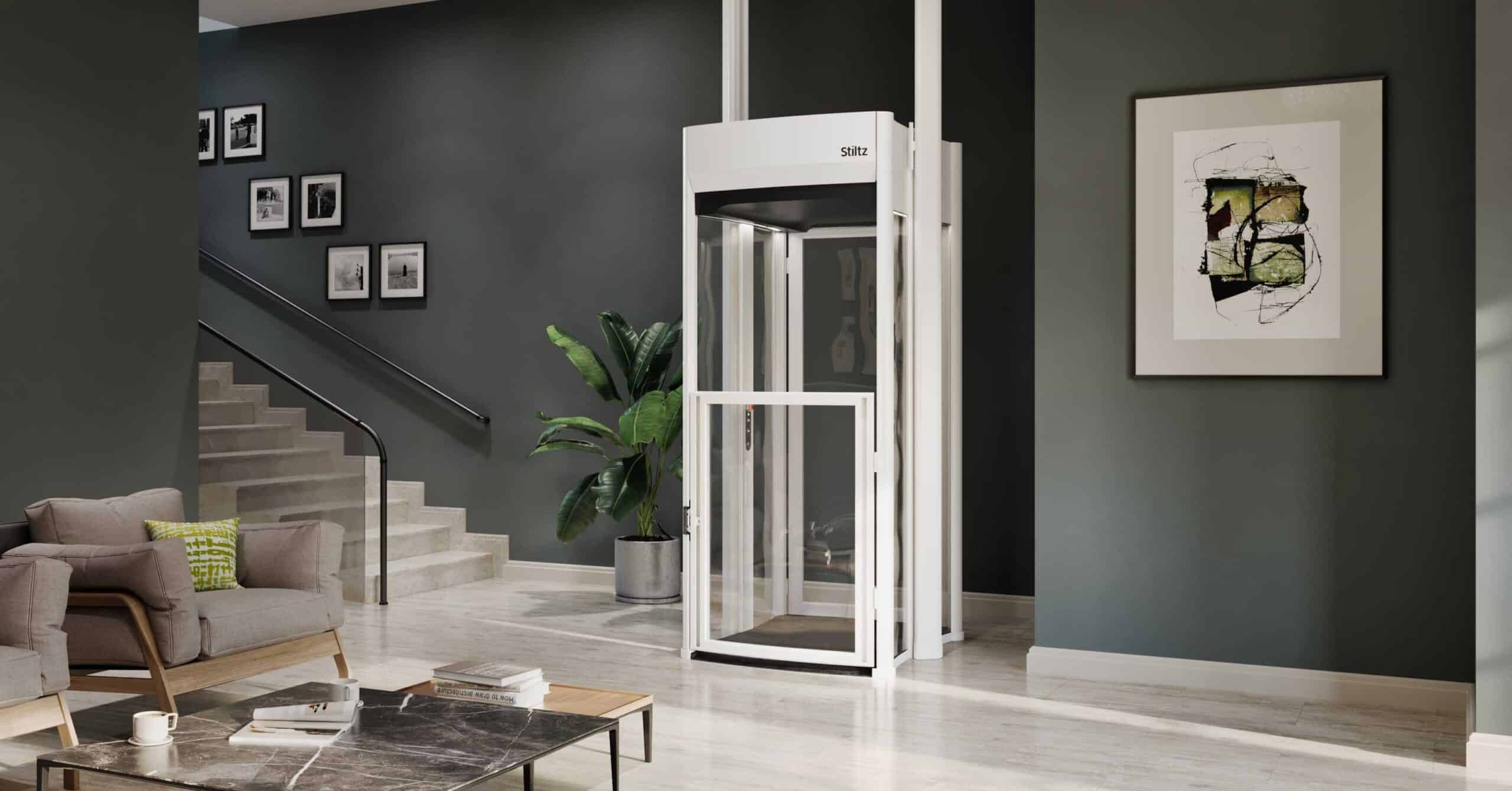
Myth 1: “Home lifts are only for mansions and luxury homes.”
Fact: Not anymore! Compact, shaftless lifts like the Stiltz Duo can slot into spaces as small as a clothes cupboard. You’ll find them in Nairobi maisonettes, cosy townhouses, and even modest two-storey homes in Mombasa.
Myth 2: “They consume too much electricity and will spike my bill.”
Fact: Modern home lifts are surprisingly energy-friendly. Many models consume power — about the same as a kettle or microwave when running — and they only draw electricity while moving.
Myth 3: “You need major structural changes to install a lift.”
Fact: Not true! Self-supporting, shaftless designs mean no deep pit, no machine room, and very little building work. In many Kenyan homes, the whole thing can be up and running in less than a week.
Myth 4: “Home lifts are unsafe during power outages.”
Fact: Most lifts in Kenya come with battery backup or manual lowering systems, so you’ll never be stuck mid-air. Even during a blackout, the cabin can safely glide to the nearest floor — and with a Stiltz Home Lift, you already have this feature built in, so you don’t need to worry at all.
Myth 5: “Maintenance is a headache and spare parts take forever to arrive.”
Fact: Choose carefully first, go with a brand that has a solid Kenyan service team and spare parts in stock, and you’re sorted. With proper care, your lift can serve you happily for 15–20 years.
Installation Without Compromise — Stiltz Home Lift
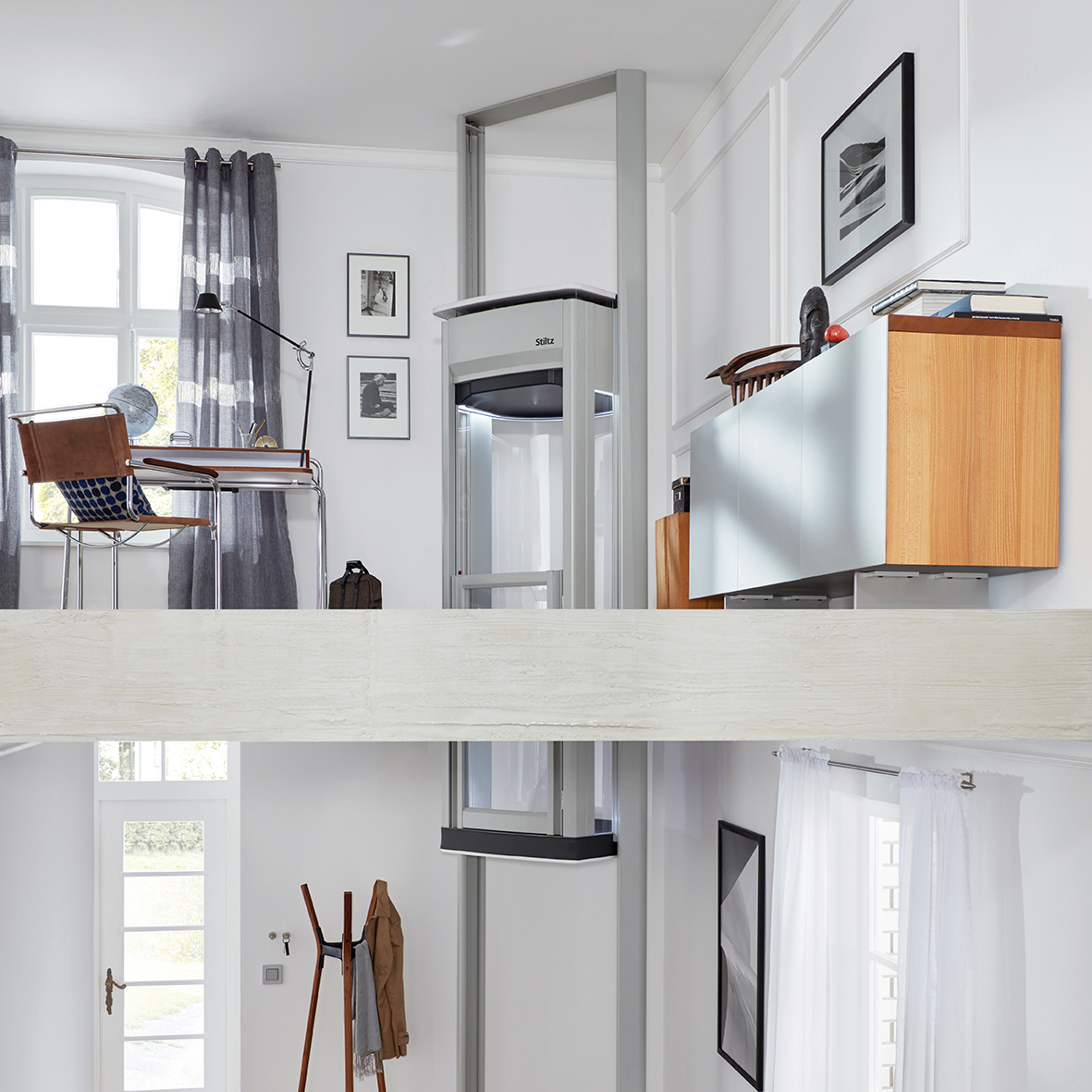
Installation Without Compromise
Forget the major construction work and long waiting times that come with traditional elevators. The Stiltz Home Lift features an innovative self-supporting design — no pit, no machine room, no load-bearing wall — free from floor layout or space restrictions. Installation is quick and clean, usually completed in just 1-2 days, without large-scale building work or disruption to your daily life.
Whether it’s an existing home, a loft, attic space, or even a new build, Stiltz fits in seamlessly. You can install it in the corner of your living room, bedroom, stairwell, storage room, or even garage — without sacrificing valuable living space or flow in your home.
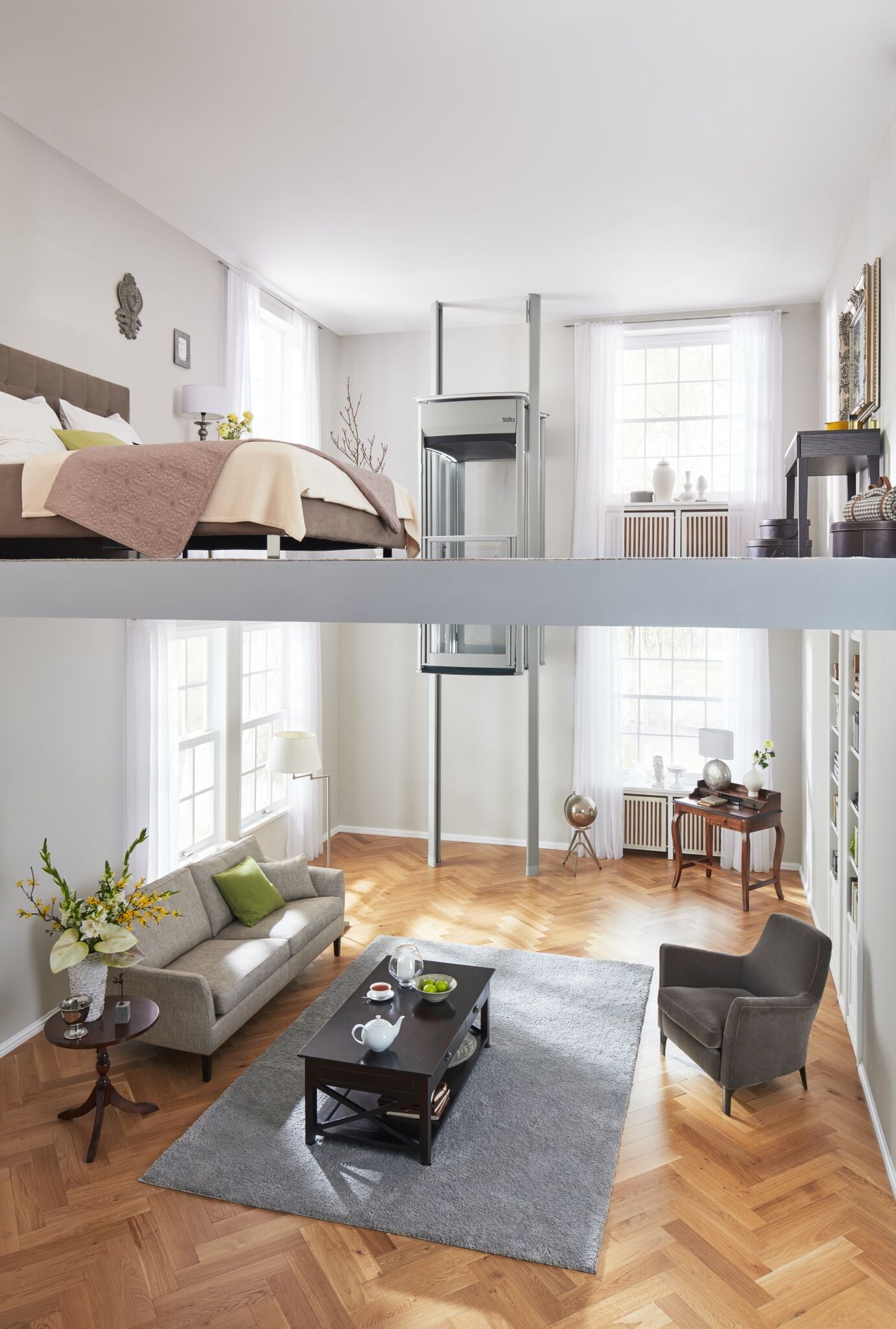
Move Freely and Safely
The Stiltz Home Lift combines a smooth drive system with multiple safety features to deliver a secure and comfortable ride for the whole family. It operates quietly, starting and stopping gently, with barely any noise — perfect for use at any time of day.
Equipped with an obstacle detection system, emergency stop button, backup battery for power outages, and dual-door locking for extra protection, it ensures every journey is safe. Seniors and those with limited mobility can avoid the strain and risk of stairs, while children and pets can ride with confidence.
Whether you’re carrying luggage, daily essentials, or simply moving between floors, it’s an effortless way to make going upstairs and downstairs a small everyday pleasure.
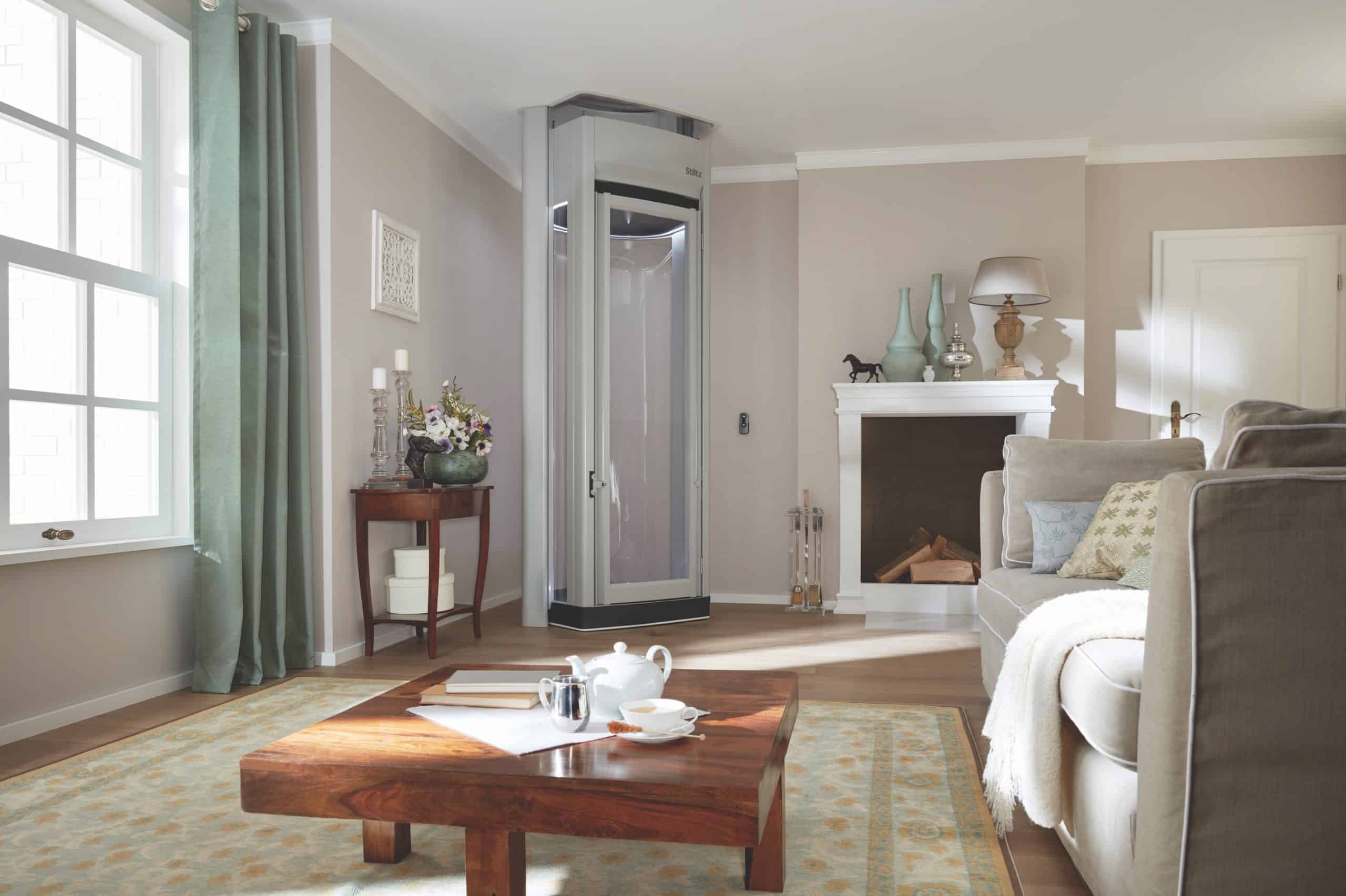
Suitable for All Homes
Whether it’s a sleek modern apartment, an elegant detached villa, or a uniquely designed loft, the Stiltz Home Lift blends in naturally. The smallest model takes up just about 0.55m² — smaller than a closet — yet comfortably carries 1-2 passengers. The Trio model, at 1.25m², can accommodate a wheelchair user plus a caregiver, maximizing both convenience and comfort in your space.
With no need for load-bearing walls or complex construction, you can choose the installation spot you like best. Whether you live in a compact space or a spacious multi-storey home, Stiltz delivers a convenient vertical travel solution.
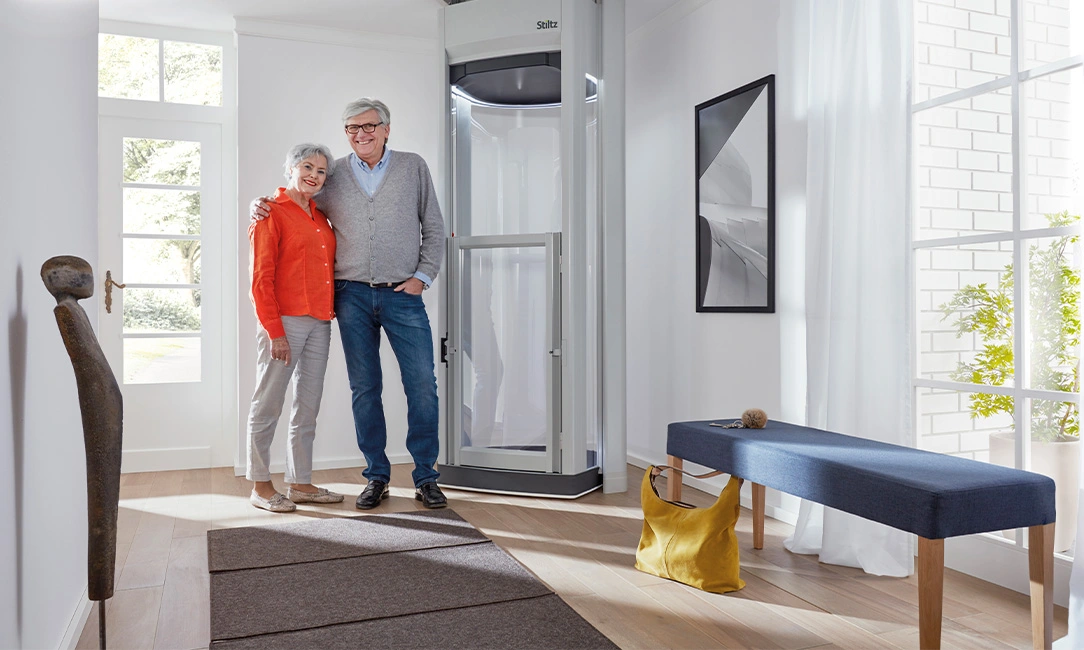
Designed for Every Stage of Life
Stiltz is more than a solution for today’s needs — it’s a long-term investment in your future lifestyle. From young couples moving into their first home, to growing families, and to seniors seeking a safe and comfortable retirement, Stiltz remains a valuable part of your home.
It helps seniors continue living independently in the comfort of their own home, eases the burden on caregivers who assist with stairs, and supports family members with temporary mobility challenges — whether due to injury, pregnancy, or recovery. As life changes, the lift’s value doesn’t fade; instead, it becomes even more essential for its convenience, effort-saving, and safety.
FAQ
1. How long does it usually take to install a home lift?
The installation time for a home lift depends on several factors, such as the model, installation location, whether structural modifications are needed, and the age of the property. In general, models that don’t require a pit or major structural work can be installed in about 2–5 days. If structural reinforcement, wall removal, or customized finishes are involved, the process may extend to 1–3 weeks.
Confirm the schedule with your contractor in advance and allow some extra time to account for weather, material delays, or other unexpected issues. This will help ensure a smoother installation process.
2. Can a home lift match my interior design style?
Yes. Modern home lifts come in a wide variety of designs, and many brands offer customizable options such as metallic finishes, wood textures, and glass styles, allowing the lift to blend seamlessly with your home’s overall aesthetic.
For example, with a Stiltz Home Lift, we can even install it inside a wardrobe for a discreet “hidden” design that preserves your interior’s beauty. Whether your style is modern minimalism, classic elegance, or sleek glass, you can enjoy both functionality and aesthetics in one solution.
3. Does a home lift require regular maintenance?
Yes. A home lift is a long-term mechanical system, and regular maintenance is essential to ensure safety and extend its lifespan.
We recommend having a professional technician carry out a full inspection at least once a year — checking the drive system, electrical components, safety sensors, and door mechanisms. Neglecting maintenance may lead to frequent breakdowns, premature wear of parts, or even passenger entrapment in unexpected situations.
Choosing a brand with a local service team ensures you can get prompt support when needed, reducing both downtime and risk.
